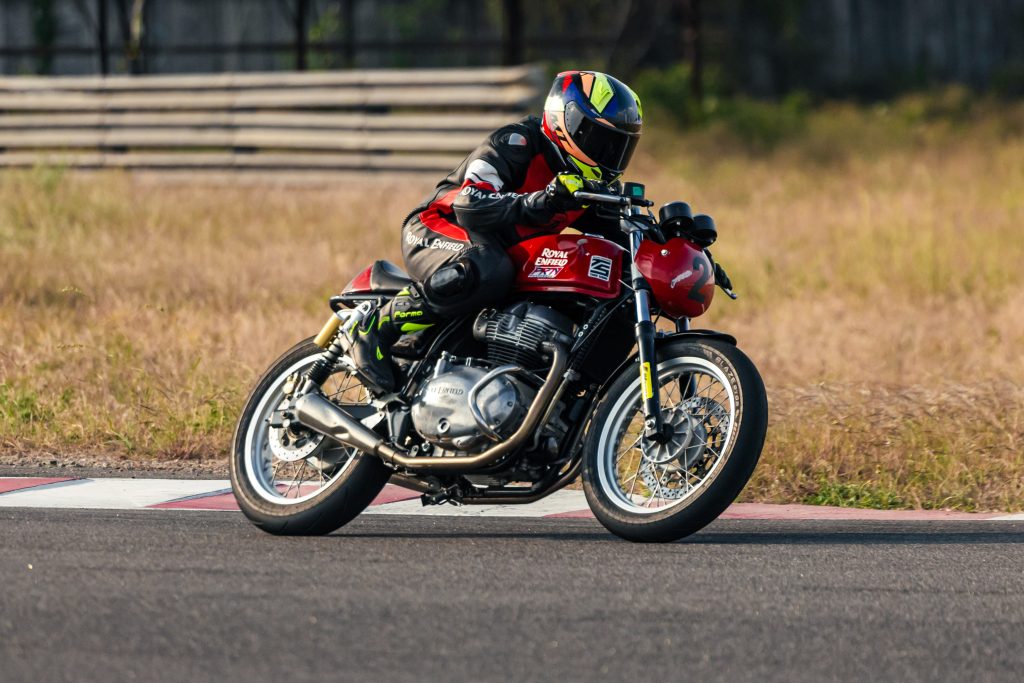
We flew to the legendary Kari Motor Speedway in Coimbatore to take part in the Royal Enfield Track School
The Kari Motor Speedway (Kari) is one of the oldest motor sport tracks that is still in existence in India. Named after the late Sundaram Karivardhan, a legend of Indian motor sport, the Kari track, along with the Madras International Circuit (previously Madras Motor Race Track) in Chennai and Buddh International Circuit in Greater Noida, Uttar Pradesh, is part of the Holy Trinity. Riding on a racetrack is something almost all the bike enthusiasts dream of.

The Royal Enfield Track School (RETS), powered by PRN Motorsport, was established recently in our country to hone riders’ skills for the road, build confidence in riding, and, ultimately, to get more people into bike racing. So, what better way than to get coached by former Royal Enfield GT Cup winners and national champions? The RETS by PRN Motorsport is a two-day school that is spearheaded by international racer and national champion Anish Shetty, who is accompanied by fellow bike racers Pradeep Reddy and Soorya P M. Anish is also a co-founder of PRN Motorsport.
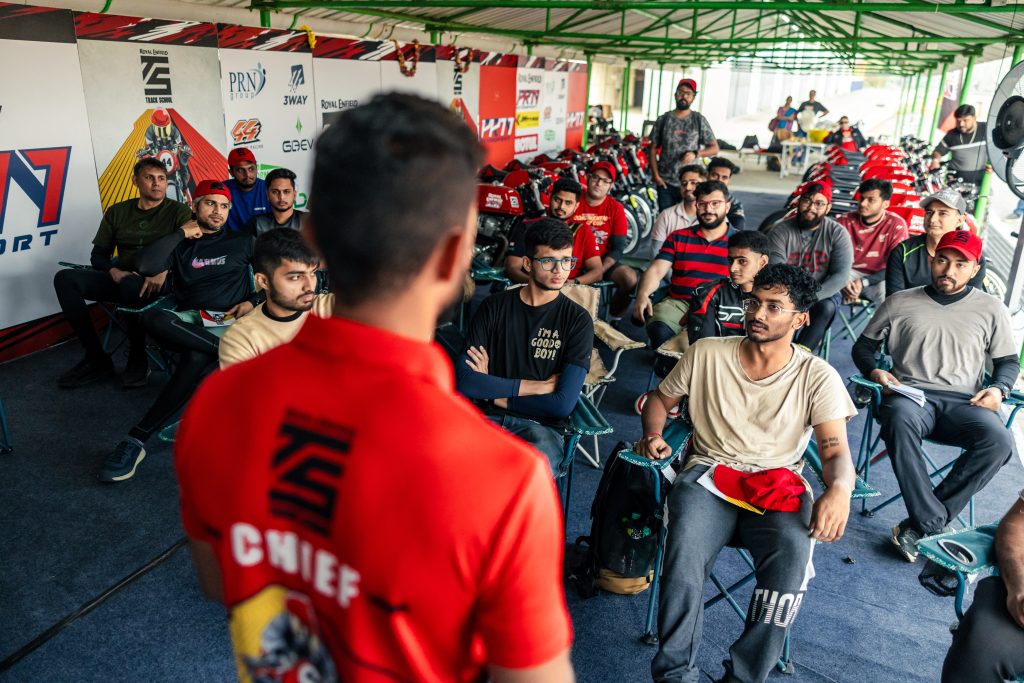
A brief introduction before we get started. Kari is a 2.1-kilometre-long track that was built in the early 2000s. Its layout was revised in 2020 when two corners were added to the start-finish stretch. Coming to the school, we got to the track on the first day at 7.30 am when we were welcomed by the registration committee. After finishing paperwork, we were sent to select our gear. I was carrying my double D-ring helmet and Royal Enfield provided us with the rest—a full racing suit, a pair of boots, and gauntlet gloves. We were asked to assemble in the classroom for an introduction, discussion, and briefing session where we were briefed on track etiquettes such as the position of marshal posts, the meaning of various flags, and pit entry and exit, among others. We were also given a neat handbook that had all the flags explained with an illustration of the track layout. Anish then briefed us about the basics of biking and track riding, covering topics such as braking, cornering, line selection, and vision. We were then divided into two batches and were assigned our bikes. Ah, yes, Rocker Red Royal Enfield Continental GT-R 650s, all lined up in a beautiful way with numbers stuck on them. The track-ready GT-R 650s had custom exhausts and they made a bit more power than the stock GTs.

We were asked to suit up and then sent for a short track session where we followed one of the coaches in formation and he pointed out all the marshal posts on the track. We then did two laps and came in for a debrief session where more inputs were given and we went back on to the track. Later, we went on a nine-lap ride where a coach led us and all of us followed behind in a single file convoy and, after each full lap, the person behind the coach would move to the end of the pack. This gave everyone an opportunity to ride behind a professional to see how the lines were taken and to also know where the braking and accelerating points were on the track.
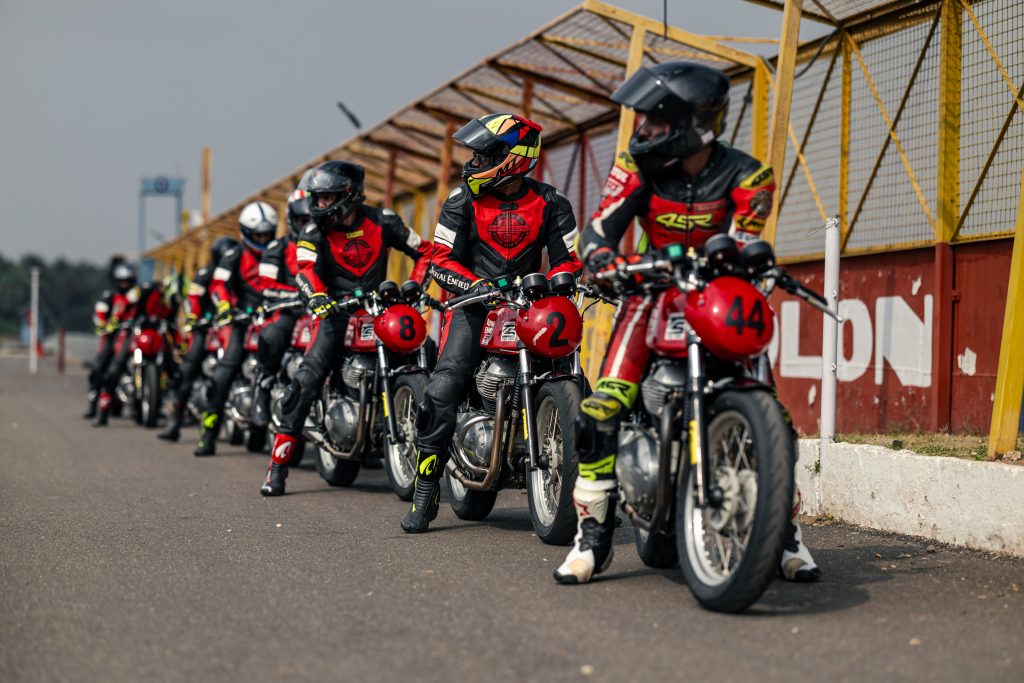
I encountered a small incident wherein the front brake of my bike faded and the lever became completely jelly-like with no bite. However, there was nobody behind and the rear brake was working fine, so I pulled over safely into the pit and got down. The technicians there immediately worked on the bike and got it repaired in less than a few minutes. By this time the sun was at its highest point and I was getting scorched. But little things such as the mist-spraying pedestal fan and the endless supply of drinking water for all of us, along with glucose powder, were life-savers and the organising team came prepared. At the end of day one, it was all smiles and excitement, with a lot of eagerness for the next day.

Day two started off with everyone reporting at 7.30 am and we slowly walked on to the track and did some warm-up exercises. Then we were taken for a track walk by Anish Shetty and the other coaches, getting guidance about the lines to choose, hitting the apex, entry and exit points out of corners, braking, acceleration, and looking ahead at where we had to go. To me, this was the best part of the entire two-day school; it not only gave me a close look at the track but also a goosebumps moment realising all the history behind and the big names that have raced on it.
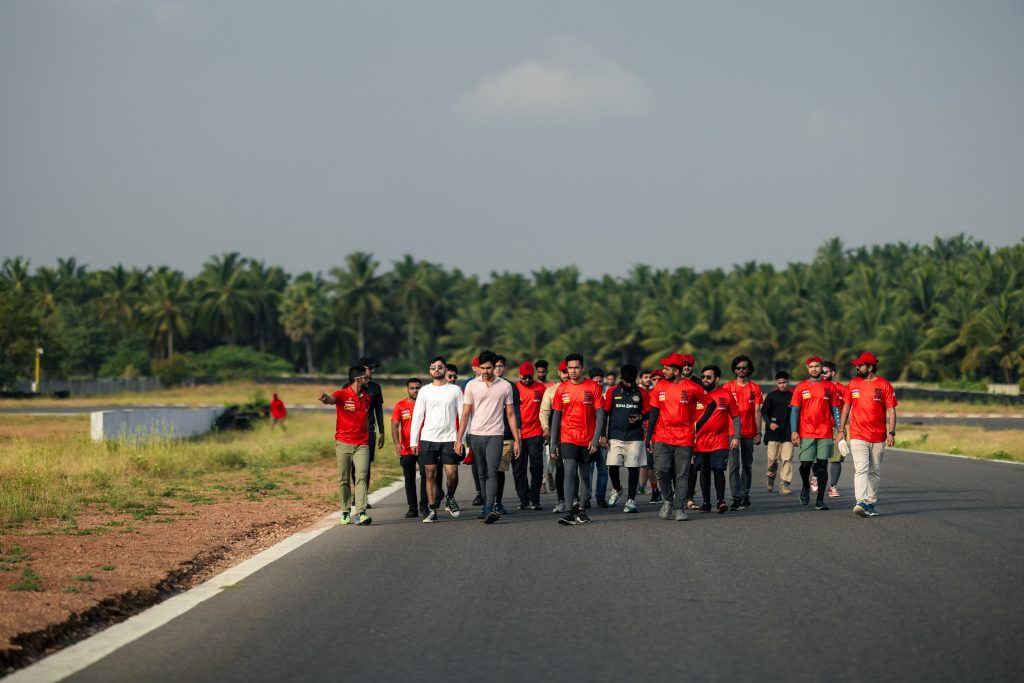
We then headed back to the pits where we were briefed a little and then suited up to go out on to the track again. But this time we did practice drills on the start-finish stretch. We worked on the braking technique first wherein the coaches identified mistakes and gave us inputs personally after each drill. The next one was riding slalom through a set of cones and this taught us counter-steering and using our core body to handle the bike. After finishing the set of drills, we headed back to the pits for a small briefing session. A lot of valuable information was given by the coaches, some of our “whats” and “ifs” were answered, and techniques to implement while going back on to the track were underscored. We were then given more laps with a little more freedom to ride while the coaches rode around the track alongside the riders, monitoring everyone and correcting mistakes. This was very helpful indeed.
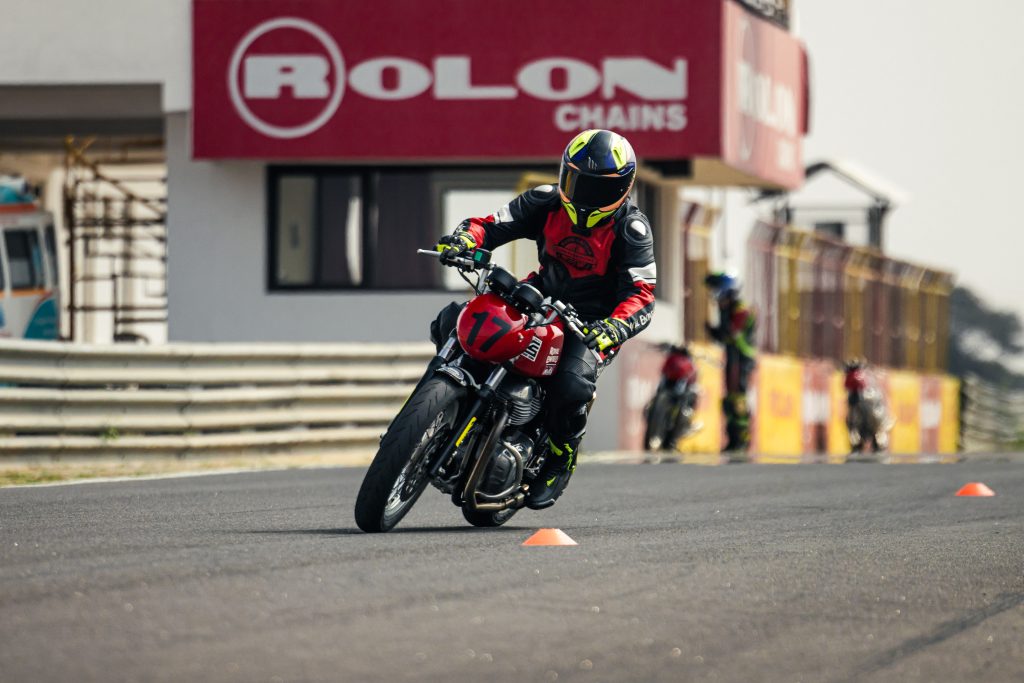
At the end of the day, we got four sessions on the track and we only wanted more. Sadly, the organisers had to stick to their schedule and wrap up on time. The Royal Enfield Track School Level I and II, powered by PRN Motorsport, culminated with the distribution of certificates and a photograph session with the entire line-up of participants and bikes. The school maintained their schedule perfectly through the two days and there were no delays or discrepancies. Everything worked smoothly and gave us a good experience in the end with a lot to take away and to improve on.

Story: Charan Karthik
Photography: Royal Enfield


Leave a Reply